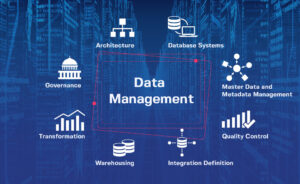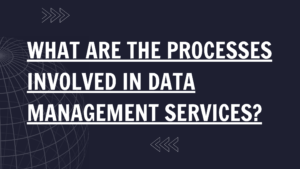Instead of debating whether to integrate data across your broader networks, the question now is how to employ centralised data management in logistics to gain a competitive advantage.
Consumers nowadays just lack the tolerance for the time and consideration that decisions involving logistics operations require for incomplete and inconsistent data. Centralized data is required to facilitate automated operations, data reuse, sharing, and an uninterrupted, more productive workflow. But what centralised storage infrastructures do logistics data management teams use?
When Is It Time To Utilize A Data Lake?
Data lakes exist to gather all of your data, even if it doesn’t now serve any function, enabling data scientists to go back in time. Raw data is kept in its original format for more complex data types like Internet of Things (IoT) device logs and various photo, video, and audio formats.
They can also integrate structured, transactional data from CRMs and ERPs (CRM). If the information has a purpose, data scientists can also establish the data’s structure and organisation to move it to a data warehouse.
When Should You Employ A Warehouse?
Before being placed into storage, the data that will eventually be kept in a data warehouse is carefully selected. For front-end systems utilised by non-tech workers, the processed form of the stored data makes it much easier to interpret.
It receives data from relational databases, transactional systems, and other sources, and stores it across several organised, independent files. Following that, it can be accessed by SQL clients and programmes like BI tools and ERPs.
Why Central Logistics Data Management Important In Business?
Storage techniques like lakes and warehouses aid in centralising Logistics Data Management Services so that different business units can use it for research and insight-gathering. The benefit of data lakes is that they give IT teams the freedom to select the various compute, storage, and metadata technologies they want to use based on the requirements of their systems. They are a far more flexible version of a data warehouse for do-it-yourselfers.
- No More Silos For Data: A central data lake eliminates data duplication and produces a single version of the truth by enabling seamless use and access from numerous authorised parties.
- Basis For Advanced Analytics: Data scientists can train AI and ML models with larger volumes of comprehensive data since they hold a variety of datasets and data types.
- Real-Time Decision Support And High-Quality Data: Data lakes can make use of massive data volumes, create a solid foundation for data cleaning, and deep learning algorithms.
- Scalability: Data lakes are incredibly scalable due to their flexibility in holding both structured and unstructured data from various sources. They scale more affordably as well.
More To Know For Logistical Data Services?
In a lake (your storage location), place a floaty (structured data), armbands (semi-structured data), and goggles (unstructured data). The first two objects can pass across a dam that connects a lake and a river and can be opened at will. A diver (a data scientist) could simply swim over and g
rab the goggles despite the fact that they didn’t float on their own and instead sank to the bottom.
At a warehouse, things are a little different. It takes some time to go around and get what you need from the bottom because the things are stacked on top of one another. Warehouses can also just deliver floaties, or packets of structured Data Logistics Outsourcing Services, to one another if they have a predetermined format.
Conclusion
Tech2Globe is the best outsource data management services for logistics that you can hire for your business and get it to the higher level within no time.










